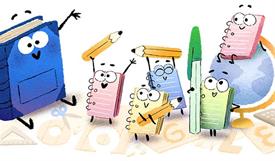
There is no predefined way to assess the quality of a website. It is developed, it is accessed by its users, it is liked or disliked, and the traffic reveals whether the website was good, exceptional or unworthy. Here are a few tips ...
Here are a few tips following, to the way of a nice looking user-friendly website, that is sure to attract the visitors, accounting to the ease of operation and attractiveness.
-
UX Testing:
That is "User Experience" testing. It is the measure of ease the user feels, while accessing the site. This is a good indicator to show the 'joy' factor the user must have experienced, while he was actually looking through the website content.
This testing can be in the form of:- Manual Feedback, where the user shares his experiences about the site.
- 3rd Party tools like 'Google Analytics' , that gives the detailed statistics about the visitors for a website.
-
Twitter's Bootstrap Framework:
It is a free collection of tools for creating websites and applications. It contains HTML and CSS-based design templates for typography, forms, buttons, charts, navigation and other interface components, as well as optional Javascript extensions. This framework is modular and compatible with all major browsers. -
Semantic Microformats/ Microdata:
A microformat (sometimes abbreviated μF) is a web-based approach to semantic markup which seeks to re-use existing HTML/XHTML tags to convey metadata and other attributes in web pages and other contexts that support HTML, such as RSS. Microformats emerged as a movement to make the recognizable data items, like events, geographical locations, contact details etc., capable of automated processing by software, as well as, directly readable by end-users.
Microdata uses the specifications, most widely used by search engines to display the relevant content to the users. Microdata uses a supporting vocabulary to describe an item and assign value to its properties. -
JavaScript Notifications:
It is very easy to create a dialog box on the web-page, using JavaScript. Similarly, a confirmation box can be made with a 'Yes/No' button, to get more user friendly experience. There can also be a prompt box for the 'User Input'. All of these may be customized using alertify.js library, which is an open source library to help creating such notifications and alerts. -
Alternate Style Sheets:
Style sheets are the methods for the standards-compliant web designers to design their layout. These are called Cascading Style Sheets(CSS). However, if there is a big number of audience for the web-site, all the connecting devices require specific layout formats, to display the page in a proper manner. So, for a large audience using obscure types of media, it is a good idea to design the alternate style sheets, that can suit the respective devices. -
Icon Based Fonts:
It gives a customized look to the site, and the font feels just right for the job it is made for. @Font-Face can be used for this kind of fonts, without depending upon the third party font providers. One needs to know the basic HTML/CSS coding to proceed with the front-end coding for such fonts. The quickest and the most impressive way to add matter to the topic. -
Affiliate Links:
It is an effective and friendly way, to advertise your link, using another website, and advertising theirs on your page. This will bring the traffic from different sources, and will see a rapid growth in the number of visitors. -
Responsive Media Queries:
The CSS scripts, that enable the website to call different style scripts, based on the size of the viewing device. It turns the page to a lively interactive medium, rather than a static site. -
Customize Code/ <pre> Tags:
A <pre> tag stands for previously formatted text. It is a handy way to include the snippets of the source code, in case it is needed. -
Back To Top Link:
Perfect for the very lengthy pages, when a user does not feels patient enough to scroll up the entire page, to click 'Home'. A very quick, easy, but essential element for the long content.
Author bio
This article is contributed by Chace Monteith who writes for InsiderHostReview.com where you can read unbiased web hosting testimonial.












Leave a Comment
comments powered by Disqus